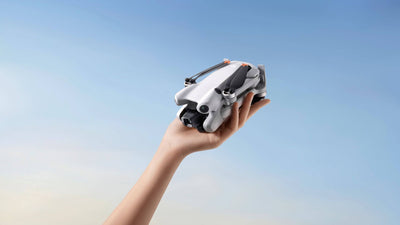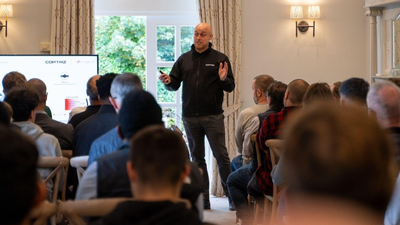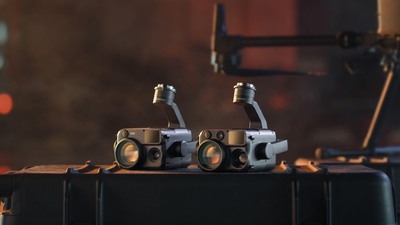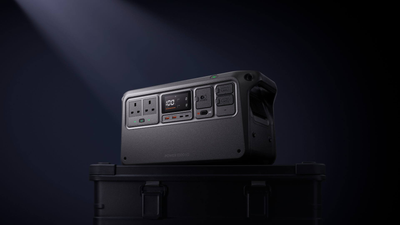Drones For Construction Monitoring: What To Look For
- by Stefan Gandhi
In the evolving world of UK construction, drone technology is fast becoming indispensable. From real-time site mapping to data-driven project oversight, drones are transforming how contractors, engineers and surveyors monitor progress, manage risk and deliver on time. Yet with a growing range of drone models and payloads on the market, selecting the right system for construction monitoring requires more than just a glance at the spec sheet. Here is what professionals need to consider.
Operational Reliability in Demanding Conditions
Construction sites are rarely predictable. Variable weather, heavy machinery and restricted airspace all pose unique challenges. Drones used in these environments must offer industrial-grade reliability. Look for IP-rated weather resistance, robust obstacle avoidance and redundant systems that ensure continuity even in case of component failure.
The DJI Matrice 350 RTK, for example, is engineered for rugged use. It features enhanced IP55 weather sealing, dual battery redundancy and multi-directional sensors, making it a dependable choice for UK construction teams operating in exposed environments.
Precision Mapping and Geospatial Accuracy
Survey-grade accuracy is a non-negotiable requirement. Construction professionals need drones that can deliver centimetre-level positioning to align with BIM workflows and compliance reporting. RTK (Real-Time Kinematic) and PPK (Post-Processed Kinematic) capabilities are essential here.
A drone like the DJI Matrice 4E integrates high-precision RTK modules and is compatible with GNSS base stations, enabling consistent and accurate geospatial data capture across vast and complex sites. This is crucial for tasks like cut-and-fill analysis, volumetric measurement and progress tracking.
Camera Payloads That Capture the Full Picture
Construction monitoring is not just about mapping the ground. It requires a full spectrum of visual and thermal insights. Multispectral imaging can detect issues beneath the surface, while thermal cameras are indispensable for inspecting HVAC systems or identifying heat leaks in new builds.
A modular platform is ideal. Payload versatility lets operators switch from a high-resolution zoom lens to a thermal sensor without downtime. Gimbals with three-axis stabilisation and vibration reduction are also vital for clean, usable imagery, especially in windy or unstable site conditions.
Flight Time and Coverage Efficiency
Time is money in construction. A drone’s endurance directly impacts how much ground can be covered per sortie. Professionals should look for drones with extended flight times, ideally 40 minutes or more, to reduce battery swaps and increase coverage.
Battery management systems that track charge cycles and optimise power usage are equally important. They not only prolong the life of your gear but ensure consistent performance throughout the day.
Integration with Construction Software Ecosystems
The value of drone-collected data lies in how it is integrated. Compatibility with industry-standard platforms like AutoCAD, Revit or cloud-based project management tools ensures that drone outputs seamlessly support ongoing workflows.
Many professional drones now offer SDK support and API integrations. This flexibility allows custom app development and automated workflows, from flight planning to data visualisation. Consider drone models that can easily interface with your existing digital ecosystem.
Compliance, Safety and Regulation Readiness
In the UK, drone operators must adhere to CAA regulations, especially in congested or controlled airspace typical of urban construction projects. Drones used professionally must have built-in safety features such as geo-fencing, fail-safe return-to-home and ADS-B receivers to detect manned aircraft.
Opting for models that are certified for operational authorisation under the UK PDRA-01 or meet SORA requirements can simplify regulatory hurdles. Always ensure that your chosen drone is future-proofed for upcoming rule changes.
Training, Support and Ecosystem Longevity
Purchasing the drone is just the beginning. Construction teams benefit from suppliers that offer training, after-sales support, and access to a broader hardware and software ecosystem. A strong support network ensures minimal downtime and better ROI.
When selecting a drone, consider the availability of local repair services, firmware updates and payload upgrades. A platform like the DJI Matrice series benefits from DJI’s extensive support infrastructure and broad community knowledge base.
Making the Smart Investment
Drones are no longer experimental tools in construction; they are central to how modern sites are managed. By prioritising rugged reliability, mapping accuracy, imaging versatility and software compatibility, professionals can make informed investments that drive efficiency and reduce risk.
Whether you are upgrading your fleet or deploying drones for the first time, the DJI Matrice 350 RTK and Matrice 4E offer industry-leading performance for construction monitoring tasks of any scale. Explore the full range of construction-ready drones at the Coptrz online store here and elevate your site operations today.




